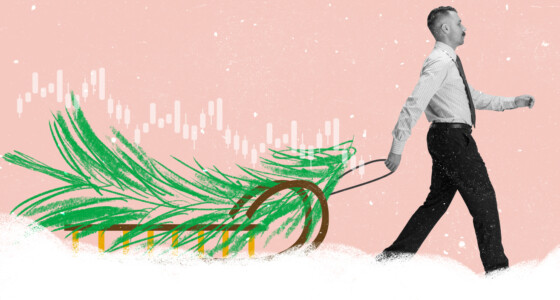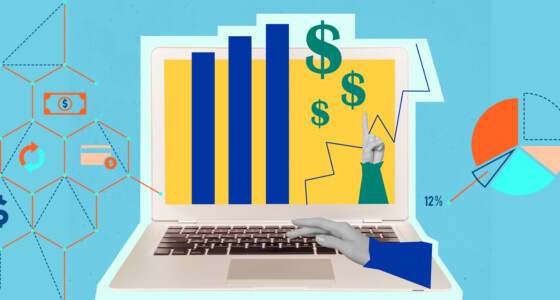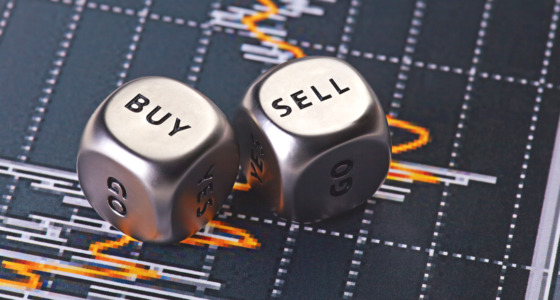

Is trading a risk? Yes, sure, but below, we’ve collected seven of the best ways you can reduce your risk.
Define your entries and exits before the trade
Firstly, a critical step that every professional trader will employ is knowing exactly where they want to take profit or stop out of a trade. It will help you define your risk:reward ratio (more on that in a second) and stop you from convincing yourself that a losing trade will suddenly turn around and become profitable. This rarely happens and usually results in a significant loss.
Instead, take profits and stop losses when you open the trade; moreover, you should have a justifiable reason for those targets. Never use fixed targets (e.g. 50 pips). Arbitrarily setting targets is a rookie mistake that never leads to long-term profitability and often results in having a stop loss that’s unnecessarily wide or cutting profits before the real big move.
Understand risk:reward ratios
Risk:reward is essential to advanced risk management trading. In essence, risk:reward refers to the ratio between how much of your account you risk and how much you could gain. A 1:3 ratio would indicate that you are risking $10 to make $30, for example.
Winrate and risk:reward ratios are inextricably linked and must be understood to trade correctly. If your average risk:reward is 1:1, you only need to win 51% of your trades to technically be profitable; if the average is 1:2, this drops to 33%, and so on. When you understand how the two are linked, you can examine your winrate and determine the exact minimum risk:reward ratio you need to be profitable.
Move your stop loss as the trade progresses
Seldom mentioned is that risk:reward evolves as the trade progresses. Say you take a position at $10, with a stop at $8 and a take profit of $14 (a risk:reward of 1:2). If the price moves to $12, you’re now risking $4 to make $2. Would you take a trade with those stats? Probably not
That’s why moving your stop loss as the trade progresses is important. It’s a little trickier in practice, but here are two rules for you to follow: move your stop only after significant progress has been made, and never move it into support or resistance. Price is unpredictable and, more often than not, will return to your entry after being in profit for a short while.

Keep your risk low
An often repeated piece of advice to those looking to understand how to do risk management in trading is to keep the amount of your overall trading balance at risk low. What we mean by this is never risk more than 3% of your account, ideally 1% or 2%. A constant 1% risk means you’d need 100 consecutive losses to wipe out your balance completely.
In reality, this means using position size calculators to determine how 1% of your trading account translates to position size and your stop loss. It’s a common misconception that 1% risk = small position size. It all comes down to your stop; a tighter stop will allow for more size and vice versa.
Watch out for spreads
Every serious trader has learned their lesson when it comes to being stopped out by the spread. The spread refers to the difference between the bid (buying price) and ask (selling price). More liquid pairs, like EUR/USD will have tight spreads, while more exotic pairs like USD/SEK will have wider spreads. Spreads also usually widen during times of low activity, like overnight.
It’s vital to account for these in your trades. Not only do they factor into the cost of the trade, but you can easily get stopped out by a wide spread, even if price technically doesn’t reach your stop loss. If you’re holding a trade overnight, widen your stop or reduce your position and look for reentry to prevent unnecessarily losing a trade.
Understand correlations
Assets like EUR/USD and GBP/USD, or AUD/USD and AUD/CAD, are highly correlated. Rarely does it ever make sense to take opposing trades in correlated assets. Additionally, taking trades in the same direction with two highly correlated assets usually doesn’t make sense; you’re just doubling your risk without any substantial difference in reward.
Avoid trading the news
Lastly, avoid trading on news. There are two reasons for this. The first is that the phrase “buy the rumor, sell the news” actually has merit. Markets operate on speculation, and positive or negative expectations become priced in. Unless there’s a significant surprise, you’ll often see price decline on the announcement of positive news.
The second is that big news events are volatile. Central bank decisions, non-farm payrolls, PMI data, and more all cause huge, unpredictable fluctuations in price. Nine times out of ten, they’re more trouble than they’re worth to trade, and many professionals sit on the sidelines to wait for the dust to settle.








